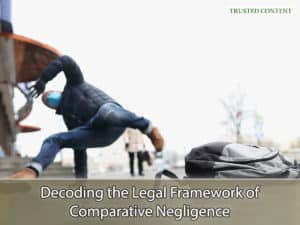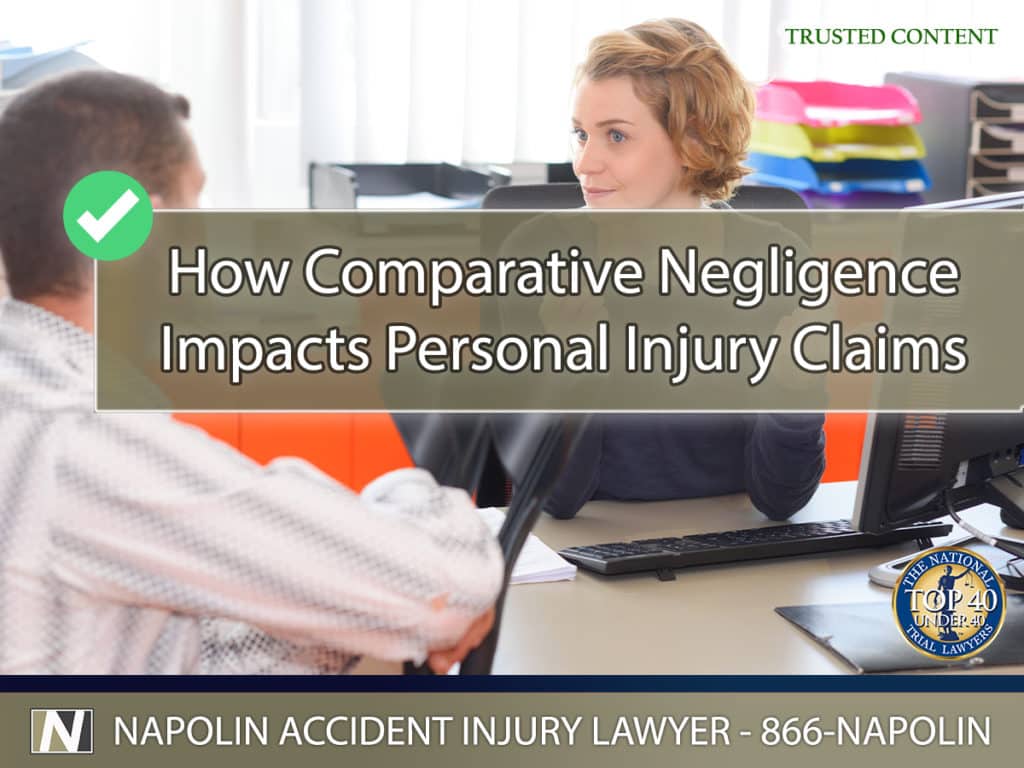In the realm of personal injury law in California, the concept of comparative negligence plays a pivotal role in determining the outcome of claims. This legal principle is applied to cases where multiple parties may be at fault for an accident. Unlike some jurisdictions that follow a contributory negligence rule, which can completely bar a plaintiff's recovery if they are found even minimally at fault, California's approach is more forgiving and equitable. The state's adoption of the “pure” comparative negligence model allows for a fair distribution of damages based on the degree of fault of each involved party.

Decoding the Legal Framework of Comparative Negligence
Decoding the Legal Framework of Comparative Negligence
Comparative negligence, as defined under California law, particularly in the landmark case of Li v. Yellow Cab Co., allows for an injured party to recover damages even if they are partially at fault for their own injuries. The principle is codified under California Civil Code Section 1714, which states that everyone is responsible for an injury occasioned to another by their want of ordinary care or skill in the management of their property or person. This legal framework ensures that the compensation awarded to a plaintiff is proportionate to their level of responsibility in causing the accident.
Impact on Liability and Compensation
The application of comparative negligence significantly impacts how liability and compensation are determined in personal injury cases. For instance, in a car accident where both drivers share responsibility, the court will assign a percentage of fault to each party. This percentage directly influences the amount of compensation each party can recover, ensuring that the financial burden of the accident is shared fairly according to each party's contribution to the cause of the accident.
Exploring the Calculation of Damages in Comparative Negligence
In California, the process of calculating damages in a comparative negligence context is meticulous and requires a thorough examination of all aspects of the case. The court or jury evaluates the evidence presented, including witness testimonies, accident reports, and expert opinions, to determine the fault percentage of each party. Once the percentages are established, the total amount of damages is adjusted accordingly. For example, if a plaintiff is found to be 30% at fault and the total damages amount to $100,000, they would be entitled to recover $70,000, reflecting their reduced responsibility.
Types of Damages Considered
The types of damages considered in these calculations include both economic and non-economic damages. Economic damages cover tangible losses such as medical expenses, lost wages, and property damage, while non-economic damages refer to intangible losses like pain and suffering, emotional distress, and loss of enjoyment of life. The assessment of these damages is critical in ensuring that the compensation reflects the true extent of the harm suffered by the plaintiff.
Strategic Legal Approaches in Comparative Negligence Cases
Navigating a personal injury claim involving comparative negligence requires a strategic legal approach. An experienced attorney will gather comprehensive evidence to support the client's case, including medical records, accident reconstruction reports, and eyewitness accounts. This evidence is crucial in establishing the degree of fault and in arguing for a fair distribution of damages. Additionally, skilled legal representation can negotiate with insurance companies and opposing counsel to reach a settlement that accurately reflects the client's degree of fault and the extent of their injuries.
Challenges in Proving Fault and Damages
One of the primary challenges in comparative negligence cases is proving the extent of fault and correlating it with the damages claimed. This often involves complex legal arguments and the use of expert testimony to demonstrate how the actions of each party contributed to the accident. An attorney's ability to effectively present this evidence and argue the case can significantly influence the outcome of the claim.
Addressing Common Misunderstandings About Comparative Negligence
There are several misconceptions about comparative negligence that can mislead injury victims. One common misunderstanding is the belief that if a victim is partially at fault, they cannot recover any damages. This is not the case in California, where the pure comparative negligence rule allows for recovery even if the victim is up to 99% at fault. Another misconception is that the determination of fault percentages is straightforward and objective. In reality, this determination can be highly subjective and depends on the specifics of each case.
Clarifying the Legal Rights of Injury Victims
It is crucial for injury victims to understand their legal rights under California's comparative negligence law. They should be aware that they have the right to seek compensation even if they are partly at fault and that the amount of compensation they can recover will be reduced by their percentage of fault. Understanding these rights is essential for making informed decisions about pursuing a personal injury claim.
Comparative Negligence Across Different Personal Injury Scenarios
Comparative Negligence Across Different Personal Injury Scenarios
The application of comparative negligence extends to various types of personal injury cases in California, including auto accidents, slip and fall incidents, and workplace injuries. Each scenario presents unique challenges in applying the comparative negligence rule. For instance, in auto accidents, factors such as speeding, distracted driving, and failure to yield can all contribute to determining fault. In slip and fall cases, the property owner's negligence in maintaining safe premises is weighed against the victim's attentiveness.
Specific Considerations in Diverse Case Types
In each type of personal injury case, specific legal considerations come into play. For auto accidents, traffic laws and regulations are crucial in determining fault. In workplace injuries, the role of employer negligence versus employee carelessness is examined. Understanding these nuances is vital for accurately applying the comparative negligence principle and ensuring a fair outcome.
How Comparative Negligence Impacts Personal Injury Claims in California
How Comparative Negligence Impacts Personal Injury Claims in California
Navigating the complexities of comparative negligence in personal injury claims in California can be daunting. If you find yourself in such a situation, seeking expert legal guidance is crucial. At Napolin Accident Injury Lawyer, we bring extensive litigation experience to the table, providing our clients with the knowledgeable representation they need. We understand the intricacies of California's personal injury law and are committed to advocating for your rights. For personalized legal assistance and a free consultation, call us at (909) 962-8415. Let us help you navigate your claim and secure the compensation you deserve.

